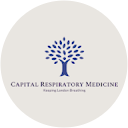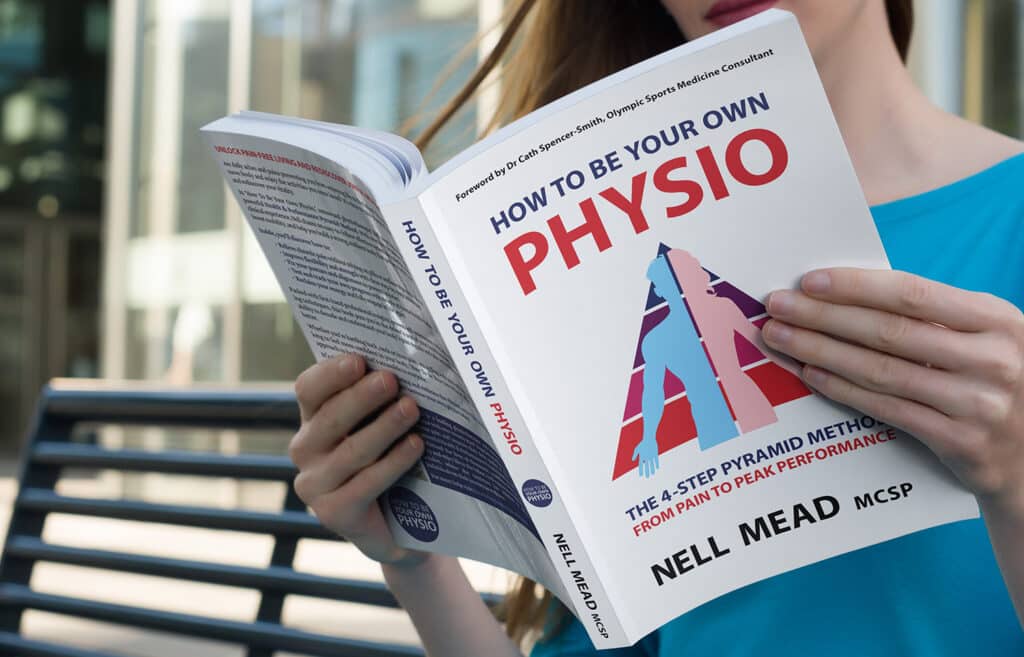Over the past few weeks, I’ve been preparing for surgery on my left knee. So far, I’ve blogged about:
- the injury itself
- the diagnosis and plan
- the logistics of preparing for surgery
- my prehab routine
- how I’m optimising my tissue health
But now I’ve had the surgery, and I thought it might be useful to hear how it went and how the recovery is going.
Monday: operation day
I was admitted to London Bridge Hospital at 7am on Monday. My nurse gave me the kit (gown, bathrobe, compression stocking for my right leg and socks) and I was allowed to wear my own underwear. She took my blood pressure, which was high – I don’t normally have blood pressure issues, but surgery is quite stressful so neither of us was too surprised by that! My anaesthetist came in to say hello, and then my surgeon, Ian McDermott. I nearly cried when I saw him and told him I didn’t want to be there, but reassuringly he said he thought that was a good sign – if I wasn’t worried, then I probably wasn’t taking it seriously enough! I reminded him that the plan is to get me back on a tennis court. His response wasn’t super reassuring: “yup, and I’d like to have long hair and be a hit with the girls, but we can’t always have what we want in life” – thanks!!!
A porter walked me down to the operating theatre, where I lay on the bed and the anaesthetist popped a cannula into the back of my left hand. It hurt, which he said was a 50/50 chance, and then he gave me some fentanyl which made me feel sick, which he said happens to about 1 person in 1000! I decided that was enough bad luck for the day.
The next thing I remember, I was back in recovery, crying my eyes out while trying to reassure the recovery nurses that I wasn’t in pain, and that I was just leaking anaesthetic out of my eyes. I cried solidly for about an hour, which felt both odd and uncontrollable, but which I’ve been reassured is a pretty normal reaction!
I was given a chicken Caesar salad, chocolate brownie, orange juice and lots of water for lunch. My nurse took my blood pressure again and it was much closer to normal, which was a relief. And then my surgeon came in again, with good news. He told me that the knee hadn’t been as damaged as the MRI had suggested, that the patch of bare bone wasn’t in as inconvenient a place as we’d thought, and that he’d “only” had to drill nine tiny holes into the patch. On the other hand, there’d been a lot of thickening around the plica and fat pad at the front of the knee, which had made it hard to see what he was doing, so he’d had to remove a fair bit of excess tissue there. None of that is vital, but it contains a lot of nerve endings, so it’s not going to be comfortable as it recovers. The good news about the cartilage damage not being as bad as we’d thought is that it might mean the recovery isn’t as tough, but I’ll have to wait to see him for a follow-up in a couple of weeks’ time to discuss that.
After he left, my nurse came back to remove the cannula from the back of my left hand, and I got down to texting, as I had so many lovely messages to respond to. After half an hour or so of tapping away, I suddenly realised I felt… damp? I looked down and realised that I was bleeding very freely from the cannula site, and had completely soaked my gown, robe and knickers! Oops! I quickly pressed the bell for the nurse, the grabbed a handful of tissues and, raising my hand above my heart, applied pressure to stop the bleeding. It gave both of us a bit of a shock, but I had actually managed to stop the bleeding by the time she got to me, so she helped me to clean up, and applied a fresh gauze.
An hour or so later, the pharmacist had arrived with my drugs (a week’s worth of dihydrocodeine), I’d demonstrated to the physio that I knew how to use crutches, and I’d been to the bathroom (general anaesthetic can cause urinary retention, so they don’t let you go home unless you’ve had a wee). I was free to leave, along with a pack of notes telling me all the things that could go wrong (mostly infection).
I managed to get dressed (you can’t wear normal jeans after a knee op, so I’ve gone full All Saints in 1998, with cargo pants – not sexy but with lots of big pockets, which are really helpful when you’re using crutches!) – and felt very relieved that I’d packed spare knickers, as the original pair were soaked in cannula blood.
My lovely uncle came to collect me, and we got me into his car pretty smoothly – we’d practised several times the night before. We worked out a route and he drove us up to his home in Norfolk, where I was to stay for a week of R&R. And a surprise was waiting for me when I got there – he and my aunt had only gone and hired a stair lift for my visit, to help with my recovery!
Honestly, if they’d asked me beforehand if I needed a stair lift, I would have politely said I thought I could manage. And I would have. But my goodness, it’s so much easier and more reassuring to have it! I did practise going up and down stairs on crutches before my surgery, and I can do it quite well – but it really is different doing it when you’re tired and recovering from an anaesthetic, so I am unbelievably grateful for their thoughtfulness.
Tuesday: D+1
The morning after the surgery, I woke up feeling surprisingly ok. I took a dihydrocodeine and my recovery supplements (calcium, magnesium, vitamins K2 and D3) and had my morning smoothie of protein, magnesium and antioxidants. I used my Scenar, iced my knee with a cryocuff, and did my exercises. I even set up my iPad and managed some emails, including booking my follow-up with my surgeon. He laughed when I told him about the stair lift.
My aunt made soup for lunch, and then I crashed at about 4pm, and was grateful to have the stair lift to whizz me up to bed for a nap.
Wednesday: D+2
I knew this would be coming, but on Wednesday I woke up feeling stiff and sore. I’d had my dihydrocodeine before bed, but even so, my knee wasn’t happy overnight, and nagged at me every time I turned over. This is a completely normal part of the recovery process and not a sign of infection – there was no redness or heat, and I wasn’t feeling unwell – but it was definitely uncomfortable, and more difficult to get about. I was also more tired, so I spent most of the morning in bed.
I had a morning dihydrocodeine, and my smoothie, then got the ice on it quickly, followed by the Scenar and my mobility exercises. Once I’d done that it was still grumpy, so I did my best to distract myself with some writing and some calls with friends, which helped a bit.
Thursday-Sunday: D+3-6
After one grotty day, the knee decided to have several good days when it behaved itself really quite well. It moved more smoothly each day, and didn’t cause too much discomfort. I started feeling a bit nauseated on the Thursday afternoon and decided to come off the dihydrocodeine, which was actually fine – the knee didn’t react. I took a couple of doses of paracetamol but quickly decided I didn’t need that either.
Chatting with one of my friends (who had pulled a calf muscle quite badly) made me realise that not everyone may be up to speed with crutches technique, so I made a video (because of course I did).
By Sunday I was feeling a bit stir crazy though as I hadn’t been out of the house since arriving in Norfolk (mostly due to the knee, but also due to horrible weather), so my uncle hovered as I manoeuvred myself into the car, and we went out for lunch at Wyken Vineyard – not a bad “local”!!! We had a lovely time – the staff couldn’t have been more helpful – but I realised quite how slow I was on crutches, I was moving at about 1/3 of the pace of everyone else. It was a bit sobering as I’d thought I was getting around quite well within the house!
Tuesday: D+9
Time to move onto the next stage of recovery and to say goodbye to the stairlift, as my uncle dropped me down to my sister’s house in Suffolk for a couple of days. I did manage to pack my bags, but I found it annoyingly hard work and definitely wasn’t able to help as my uncle carried, dragged and threw all my things down the stairs (he did check first to make sure there were no breakables before throwing!) and it was the same at the other end as he and my sister stowed my stuff into her spare room. Crutches are so frustrating – rucksacks and lots of big pockets do help, but not being able to carry even a cup of coffee is annoying!
My sister has three Cocker spaniels and a lively six year old son, but they all managed to behave pretty well around a crocked Auntie Nell, I was impressed! I did miss the stairlift though! I hadn’t fully realised quite how much work it is to get up the stairs on crutches – going down felt OK, but going up felt very one-sided with my right leg “going to heaven” and doing all the work.
Thursday: D+11
After a lovely couple of days catching up with my sister, I think this was the toughest day emotionally, after she drove me home. Somehow my brain seemed to have equated “going home” with “everything should be fine now” and of course that wasn’t the case. A friend was due to come and “babysit” me but he hadn’t arrived yet and I felt ridiculously alone and vulnerable.
When he did arrive, I explained that his role in my recovery was to walk the dog, to carry things I couldn’t due to being on crutches (there’s a certain amount you can carry with a backpack; but plates of food and cups of coffee are definitely out, which is unhelpful for survival), to help with my laundry and to call an ambulance if I took a nose dive down the stairs.
Wednesday: D+16
This was the day for my routine follow-up with my surgeon – yay. Taking public transport was still out of the question (my local station is a 15 minute walk away at London pace, and there’s no lift to the platform) so I booked a cab. My knee was still feeling quite sensitive around the wound site, so I wore my baggy trousers with shorts underneath.
Ian checked that I could tense my quads, raise my leg easily and bend my knee comfortably and then once satisfied with those things, he talked me through the operation, showing me videos from inside my knee. (This is normal for an arthroscopy, because they have to put a camera inside your knee so that they can see what they’re doing – you don’t get a video for open surgery because they can see what they’re doing with their eyes!)
Then he reiterated the recovery process – that initially a scab has to form inside my knee, covering the bare bone he’s drilled, and then the scab has to form a scar, a layer of fibrocartilage, which has to be solid by the time I get back on the tennis court. This means that the timeline was still going to be a further 3-4 weeks on crutches, followed by 6 months of non-impact cardio (bike, swimming, maybe cross trainer) and upper body training only, and only then can I start thinking about running, jumping and changing direction. Plus no driving until the 3 month point, because I drive a manual car, so stamping on the clutch for an emergency stop won’t be sensible.
Grr. I suspect recovery isn’t going to be the most fun few months but I’m determined not to wreck the surgery, so I have acquired an exercise bike and the occlusion cuff has arrived, so that I can at least make the most of the reduced impact period…!
I’m back in clinic (on crutches) from 27 March, and will be able to see new patients again (without crutches) from the start of May. So if you’d like to see a physio with personal (as well as theoretical!) experience of knee surgery – do give my team a call on 0207 175 0150 or email them at help@nellmead.com!







